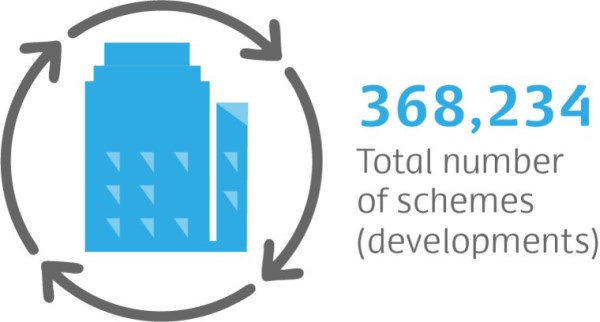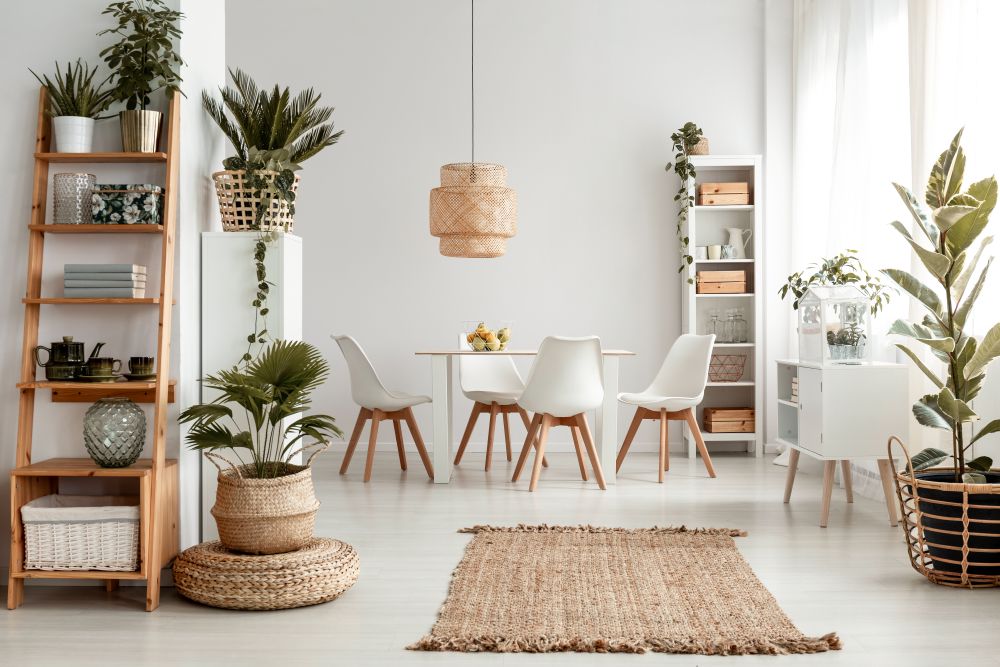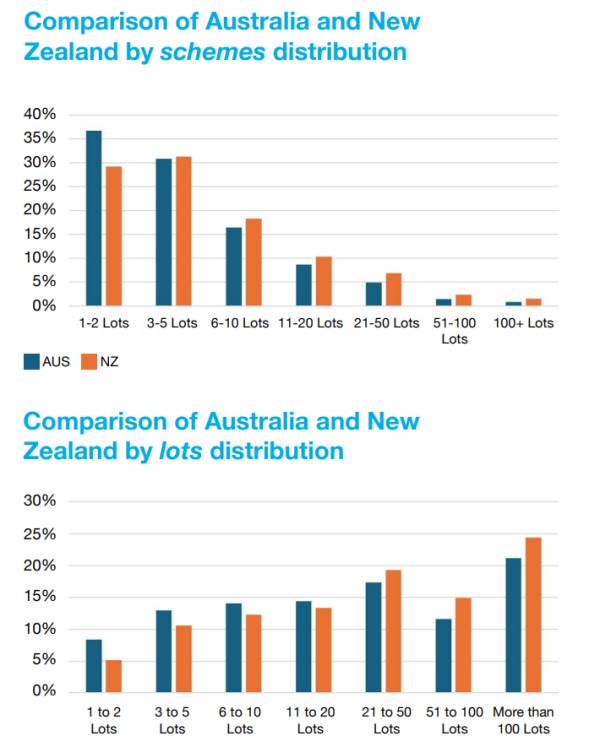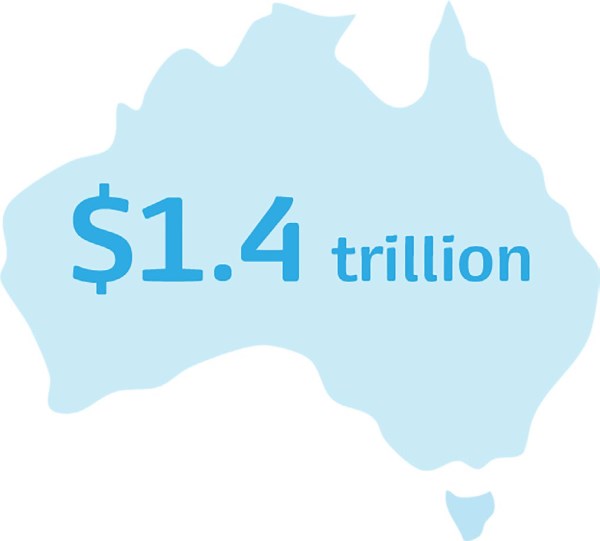Strata Insights 2024

SCA is excited to share and profile the latest deep dive into the strata industry, Australasian Strata Insights Report 2024.
The report, produced in partnership between Strata Community Association (SCA) and the UNSW City Futures Research Centre (UNSW CFRC), is the strata industry’s go-to report.
The report highlights key trends, growth patterns and demographic shifts, making Australasian Strata Insights an invaluable resource for policymakers and industry professionals and stakeholders.
This is the fourth time SCA and UNSW CFRC have teamed up to produce the report, which draws on data from national censuses, land titles, and data from insurers and strata management companies.
Growth statistics
Since the last report was compiled in 2022, an estimated additional 200,000 people have moved into strata properties, with at least 15 per cent, or more than 4.2 million people now residing in strata or community titled properties.
The total number of strata schemes (buildings) in Australia now stands at 368,234, while lots (units) have reached 3,191,244, reflecting the sector’s significant contribution to urban housing.


Between the period of 2022 and 2024, the number of strata schemes in Australia increased by 3 per cent, with lots growing by 5 per cent, a slightly slower growth than the 5 per cent and 7 per cent respectively between 2020 and 2022.
Of the 4.2 million people conservatively estimated to live in strata, 2.5 million live in private apartments, while 1.7 million reside in other dwelling types such as townhouses, retirement living or community living arrangements, highlighting the diversity of strata living.
New Zealand has experienced a 3 per cent increase in schemes (now totalling 15,678) and a 7 per cent increase in lots (reaching 176,333) since 2022. This growth rate is higher than the 2 per cent increase in schemes and 4 per cent increase in lots recorded between 2020 and 2022.
In contrast to Australia, 58 per cent of New Zealand’s strata schemes (and 60% in the North Island) were registered before 2000, indicating a higher proportion of older buildings that may require maintenance or upgrades.
Building stock — a challenge for the industry and policymakers
The report shows an almost even split between schemes registered before the year 2000 and after the year 2000 in Australia. What this means in practice is that approximately half of the country’s strata-titled buildings are more than 25 years old. With the well-documented building defect and cladding issues in newer building stock combined with the number of older buildings, the challenge for the industry and policymakers to build, maintain and improve living spaces for strata residents is plain to see.
SCA has consistently worked with governments around the country to understand and tackle the issues facing building quality in strata. From championing cladding rectification programs, educating members on building defects, advocating for warranties and insurance on multi-story buildings and contributing to building codes consultations, SCA has been working to ensure safer, better buildings, and will continue to use this data to support that advocacy.

Strata management — a rapidly growing profession
The 2024 report has drawn together data to supply a more comprehensive picture of staffing in the strata sector than was possible in previous reports. In Australia, there are an estimated 2,796 managers employed in the strata sector, with a further 3,656 other staff engaged by strata management firms to carry out tasks critical to servicing the country’s 368,234 schemes.
With more people moving into strata every year and more buildings created to service a growing population, the need to focus attention on quality training, education, upskilling and staff retention has never been more critical.
How many people live in small, large and medium buildings?
The report makes great use of graphs and charts to analyse who is living in what sized buildings, and where. More than half of the schemes (buildings) in Australia and in New Zealand have fewer than 20 lots (units).

In Australia, although less than 1 per cent of schemes have more than 100 units, they account for more than 20 per cent of the overall number of lots (units), meaning that even though there are a smaller number of buildings, they house a proportionately higher number of people.
That’s important to know when rolling out training programs for managers, understanding how complex buildings will be and being able to advocate effectively when large scale changes to buildings occur, such as infrastructure or technological based changes.
Strata dwelling values
The insured value of strata and community title properties in Australia has reached an impressive $1.4 trillion, including $486 billion in New South Wales, $471 billion in Victoria, while Queensland follows with $245 billion.

State and territory highlights
The report provides a detailed breakdown of strata trends across Australia’s states and territories, revealing unique patterns in each region:
- New South Wales (NSW): NSW boasts a relatively even distribution of schemes across schemes of sizes between 1-20 lots.
- Victoria (VIC): VIC leads the nation with the highest number of strata schemes (128,896) and the highest growth rates, recording a 5% increase in schemes and a 9% increase in lots since 2022.
- Australian Capital Territory (ACT): In the ACT, 44% of strata schemes have 1-2 lots.
- Tasmania (TAS): TAS stands out with the highest percentage (58%) of small schemes with 1-2 lots in Australasia.
- Northern Territory (NT): The NT shows a more even distribution of household types compared to the national average, with a mix of lone-person households, couples, and families.
New Zealand highlights
In New Zealand, 41% of all strata schemes have 20 or fewer lots. Breaking the report down by island:
- The North Island is home to 76 per cent of the country’s strata schemes, making it the epicentre of New Zealand’s strata sector. Almost a third (31%) of these schemes have 3-5 lots.
- South Island: In contrast, the South Island’s strata schemes tend to be smaller, with 69 per cent having less than 5 lots.

Demographics — who lives in strata apartments?
In Australia, 47 per cent of private apartments are rented, while 28 per cent are owner-occupied, and 17 per cent are unoccupied.
Looking at apartment data, almost half (48%) of all apartment residents are aged 20-39, reflecting a demographics that for lifestyle, personal or economic reasons live in disproportionately high numbers in strata dwellings.
Cultural diversity is also prominent, with 46 per cent of residents born in Australia and significant populations from China (6%) and India (5%). While 53 per cent of residents speak English at home, many residents communicate in other languages, showcasing the multicultural nature of strata communities.
Implications and future trends
The Australasian Strata Insights Report 2024 highlights key challenges and opportunities for the strata sector in Australia and New Zealand. A major concern is the aging of buildings, particularly those constructed before 2000, which now require significant renovations and upgrades to meet modern standards for safety, energy efficiency, and liveability. This presents a need for substantial investment in the maintenance and redevelopment of older strata schemes, as well as addressing building quality issues in newer developments.
The report also stresses the importance of education, training and staffing in what is a rapidly growing and professionalising sector, and the need to adequately equip a growing workforce to manage both existing and new schemes.
The UNSW CFRC and SCA teams encourage you to share the report with owners, suppliers and anyone interested in the strata sector to increase their knowledge of the sector as a whole.
View Comments
(0)